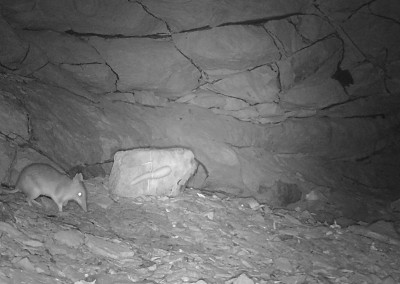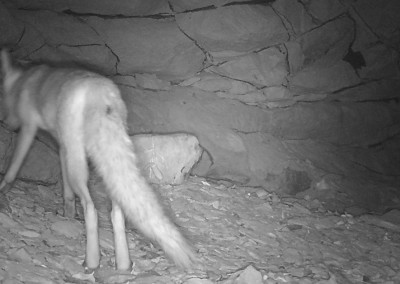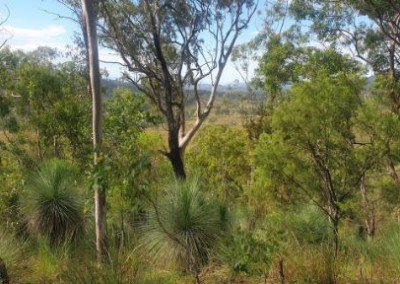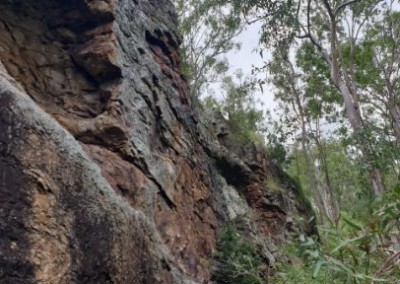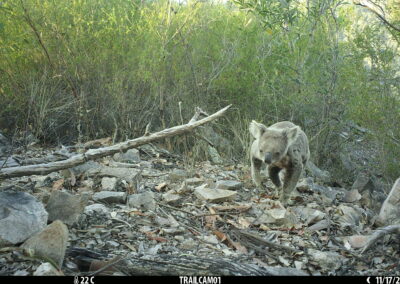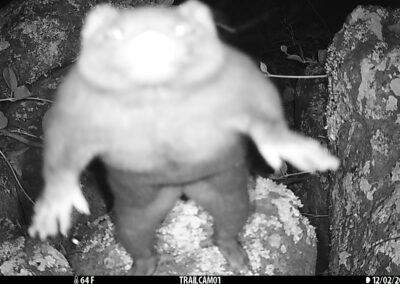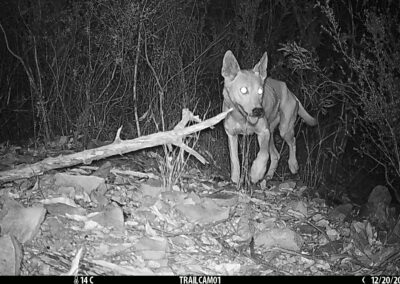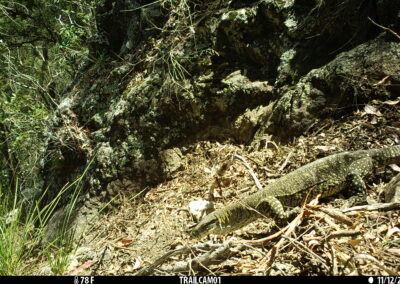Surveying Logan’s
Brushies
Understanding brush-tailed rock-wallaby populations in Logan
Back to BTRW Conservation Network
© Canva NFP
About this project
In 2021, Wildlife Queensland and Logan City Council joined forces to investigate habitats within the Logan City Council Area for evidence of populations of the vulnerable brush-tailed rock-wallaby. Although this project pre-dates the establishment of the Brush-tailed rock-wallaby Conservation Network, it continues to feed into the overall goal of helping to save this beautiful threatened species.
Brush-tailed rock-wallabies, affectionately known as ‘brushies’ are listed as vulnerable under both Federal and State legislation, and a national recovery plan for the species was published in 2011.
Habitat modification through land-clearing and weed infestation, fragmentation, and pressure from introduced predators (feral dogs, cats and foxes) or competitors (feral goats, deer and horses) factor significantly in population declines.
This collaborative project aims to:
- discover sites and suitable habitats within the Logan Local Government Area that may support populations of brush-tailed rock-wallabies
- undertake initial surveys of weeds to gauge baseline data on weed infestation and compare that with infestations at intervals during Council’s weed control project
- engage volunteers to assist with the project and communicate the conservation message associated with preserving this species
- undertake infrared camera-monitoring surveys at selected sites to establish a baseline of predator and wallaby presence and understand wallaby use, activity and threats present
- communicate results and provide a report to Logan City Council.
 © Wildlife Qld
© Wildlife Qld
Project Officer Hannah Thomas surveying sites in Logan.
 © Wildlife Qld
© Wildlife Qld
Setting up the wildlife-monitoring cameras on-site.
Project progression
Infrared camera-monitoring surveys have begun at sites around Mt Perry. So far, no brush-tailed wallabies have been observed, and only three other native species have been caught on camera (long-nosed bandicoot, swamp wallaby and echidna). The lack of wallaby sightings may be because ferals appear to dominate, with at least four feral species documented so far (red fox, cane toad, black rat and house mouse).
Long-nosed bandicoot
A long-nosed bandicoot (shown), swamp wallaby and echidna were the only natives filmed as of June 2022.
Red fox (Vulpes vulpes)
At least four invasive species have been recorded in the Logan surveys, including foxes, which may account for the lack of wallabies.
Rocky terrain
Brush-tailed rock-wallabies establish den sites in caves, overhangs and boulder piles along the Great Dividing Range.
January 2023
Infrared camera-monitoring surveys have begun at sites around Mt Elliott. So far, no brush-tailed wallabies have been observed, though a range of other native species has been caught on camera (see images below).
Ongoing activities
- Camera monitoring surveys
- Weed management
- Reporting
I’m excited to be working on such a beautiful and unique species and hopefully contributing to halting and preventing any further decline.
Partners & sponsors
- Logan City Council
- Bulimba Creek Catchment Coordinating Committee (B4C)

